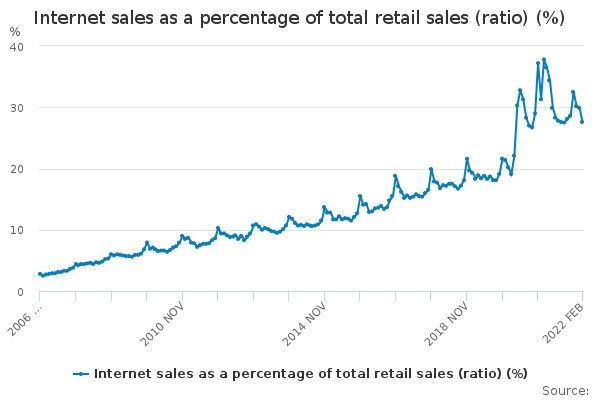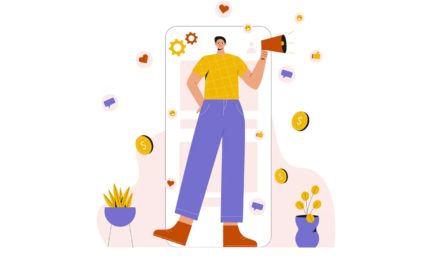There’s no denying it: the world and how we do business has seen change major change due to the COVID-19 pandemic. It’s been over two years now, and it’s easy to see the lasting impact. From six-foot markers on shop floors to hand sanitizer absolutely everywhere to masks adorning everyone’s faces, the world is not what it used to be.
These changes are especially pronounced in how businesses function day to day. And while some companies are pushing to end remote working and the like, the general consensus is that the world has been irreversibly altered by the pandemic, and businesses need to adapt to meet the challenge.
Today, we’ll be discussing six ways that the pandemic has brought change and evolved the world of online business and what that spells for the future. Let’s get to it.
1. More Online Purchases
Due to physical store closures and restrictions, eCommerce has exploded over the past two years. And it makes sense why. After all, when much of the world was pushed into quarantine in March 2020, shopping online was the only option for many.
Ecommerce was already on a steady incline prior to 2020, with year over year projections for the share it would hold in retail trending upward. But the pandemic saw this trend line skyrocket. By 2021, there were 4.9 trillion dollars in eCommerce sales. Plus, in a survey of over 5,000 consumers, 62% of US shoppers indicated they make purchases online now more than they did pre-pandemic.
Internet sales as a percentage of total retail sales reached its height at nearly 40%. The number has since dropped but remains far above when the pandemic started. There’s just no denying it: the pandemic reshaped the progress of e-commerce.
But that’s not even the full picture. Social commerce—online shopping done through social media platforms—saw a 40% increase in sales in 2021. As a consequence, it’s regarded as an essential part of eCommerce strategy now. When people were staying at home at the start of the pandemic, social media usage went up. It makes sense then why social selling would see a hefty bump in relevancy, too.
This fact rings especially true when you consider 97% of Gen-Z shoppers use social media as their primary source of shopping inspiration. So, if you’re not using social commerce as a part of your e-commerce strategy you could be missing out on a portion of your sales. And this will likely only continue in the future.
2. Shipping Delays
Another key way the pandemic has changed how online businesses operate are shipping delays. Even the biggest retailers in the world have seen supply-chain problems during the pandemic. Smaller businesses have been affected as well.
At one point, ports in California were so backlogged with shipping containers they were being offloaded on nearby streets! The delays, caused by a reduced capacity workforce, had impacted every industry. It made it so everyone, everywhere has had to wait longer for their orders. That goes for both the wholesale side and retail.
In the third quarter of 2021, stores in New York who shared similar port activity like Amazon, Macy’s, and Nordstrom saw a delay of at least one week. Nordstrom, in particular, experienced delays of up to six weeks at one point. Talk about disruptive!

Unfortunately, shipping delays show no real sign of stopping, making it important to diversify your supply chain as best you can. Sourcing materials from different parts of the world can help, as can dropshipping from multiple locations. Having multiple solutions to the same problems, diversification, and not relying on any one supplier can save a lot of headaches. Basically, don’t put all your eggs in one basket.
3. Increased Ad Spending
Ad spending has massively increased since March 2020 and it makes sense why. With more people at home and spending time online, advertisers found they had even more eyeballs to market to. This is one of many aspects of digital marketing that has inflated over the past few years.
Since around June 2020, digital ad spending has skyrocketed to 16.2% of ad spend by February 2022. This checks out with predictions made by eMarketer last year. They predicted that search ad spending would increase by 14.4% in 2020 but had to correct downward to 5.9% at the end of the year. However, since then investment in search ads has soared past earlier predictions.
This applies to ad exchange networks like Google Ads as well as social media ads. Digital ad spend is through the roof across these platforms as more people spend time on their phones, making purchases based on the ads they see.
4. Remote Teams
Many jobs have gone remote during the pandemic, and have continued to stay remote up to now. And it’s not like the concept of non-office work was anything new prior to COVID. In fact, many people across multiple industries worked from home or from remote locations already. There has been a 159% overall growth in remote work over the past 12 years or so, according to FlexJobs.
However, the start of the pandemic saw an epic increase in the remote workforce. Platforms like Zoom absolutely dominated as thousands of in-office workers suddenly found themselves in their home office. Projections now say that 36.2 million Americans will be working remotely by the year 2025.
For good reason too: a huge majority of remote workers surveyed by Buffer said they enjoyed working from home.
And all of this is to speak nothing of the environmental and cost benefits of working from home.
Companies can save up to $11,000 per year if workers conduct business remotely at least half of the time. Plus, remote work saves employees an average of 51 minutes each day. Combine that with a reduced carbon footprint and lowered greenhouse gas emissions, and you have a recipe for a more sustainable future for the workforce.
5. Higher Customer Expectations
Another business change to come out of the pandemic is that customers have higher expectations for having a good experience. According to a Salesforce report, 67% of customers indicated they had much higher standards for shopping experiences than previously. 95% of surveyed customers also reported they were much more likely to be loyal to a company if they trusted them.
Customers value trust in general much more now, too. 33% of Americans indicated a brand they could trust was important to them because they could not afford to waste money on low quality purchases. Brand trust varies from consumer to consumer, however. For most, brand trust centers around a product or service. At the same time, other factors weigh in as well like a company having good reviews, a store offering fair prices, good customer service, and so forth.

Personal connections are also something that have higher value to consumers now. 80% of consumers are more likely to purchase when there’s a personalized experience. Some examples of this include providing coupons and discounts based on location, providing product suggestions and discounts based on previous purchases, as well as customer-specific communications.
Basically, customers want to have their needs addressed and for the process to be convenient.
6. Digital Marketing More Important Than Ever
Marketing has increased in importance for businesses, from 62.3% up to 72.2% in the past year. Which is a pretty impressive bump. But it’s not just a matter of “digital marketing is important”. Rather, as more people spend time, do business, and make purchases online, so too are more companies vying to be the brand that captures their attention.

More brands being active online means there’s an even shorter attention span for staking a claim in your industry. It’s a cluttered marketplace and you need to put in extra effort to stand out. So, it’s not just a matter of investing in digital marketing. You also need to ensure your strategy is good.
Social media is a prime way to connect with customers. Nowhere is this more evident than with Gen Z. We already discussed how 97% of Gen Z use social platforms as their top inspiration for shopping. But social media use is up in general. Ever since 2011, the rise of digital media has been notable.
Digital vs Traditional Media
In 2018, digital overtook traditional media for the first time in terms of time spent per day engaging with it at 380 minutes. Digital media continued a steady incline to 2019 but then saw huge growth in 2020, jumping up from 409 minutes per day to 470. Engagement time is now up to 482 minutes in 2022.
All this while time spent with traditional media has been on a steady decline. It went from 364 minutes per day in 2018 down to 318 minutes in 2022.
To accommodate for the changing landscape for digital marketing, marketers have already started to change up their tactics. According to a survey conducted in 2021 of 8,227 marketers, 48% of respondents indicated they have changed their digital marketing strategy entirely even before the beginning of the COVID-19 pandemic.
47% of those who responded said that they’ve changed tactics due to organizational challenges. 45% said that workflow and process management were issues that spurned on change.
The very real limitations the pandemic posed from staffing to shipping to workflow issues forced many companies to alter the way they approach digital marketing. And for most, the changes are here to stay. If anything, the pandemic has shown that companies need to be more flexible in the way they approach both day-to-day business and their long-term strategies.
How Did the Pandemic Change Your Business?
The pandemic has irreversibly affected the buying market. This is an inescapable fact. More purchases are made online than ever before. Many remote workers are spending more time at home, and businesses have followed them with a larger focus on digital marketing. Digital ad spend has increased tremendously and customers have found they value quality more than ever.
Shipping delays plague business operations to this day and it’s simply a matter of life now that needs adjusting to. And if you haven’t started adapting to these truths yet, it’s time to start now – they show no signs of going away. The pandemic has been a struggle across all aspects of life. However, businesses who adapt to the current world we’re living in (rather than clinging to 2019 ways of thinking) stand to move forward positively.
What’s the biggest business change (good or bad) you have seen due to the pandemic? Please share your thoughts in the comments!















